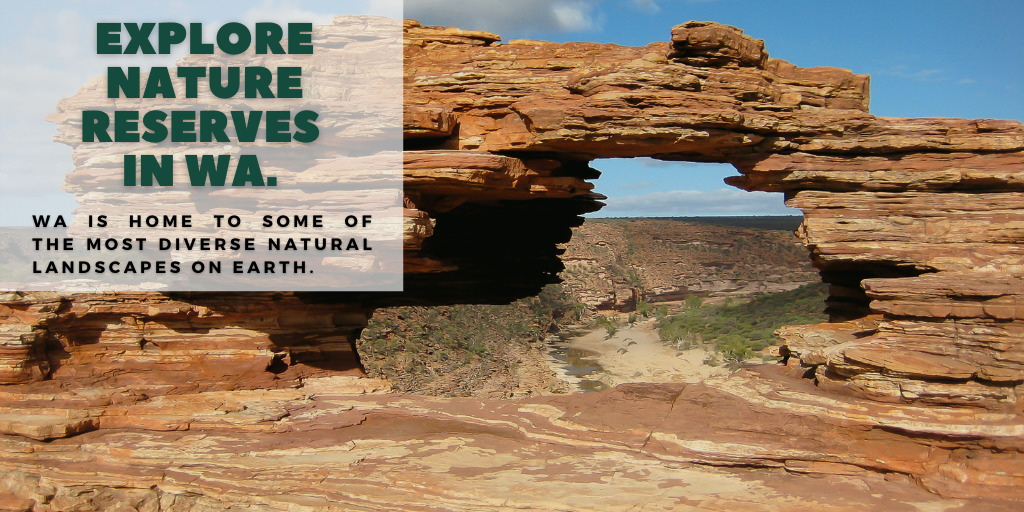In support of WA Wander Out Yonder campaign, ISPL encourages Western Australians to visit National Parks, Nature Reserve or another place that protects WA fantastic biodiversity. National Parks and Reserves are Crown land that has been set aside for the preservation of biodiversity and natural or cultural heritage values. These areas are collectively referred to as conservation reserves. In Western Australia, there are three main types of conservation reserve; nature reserves, conservation parks and national parks. Together, these account for approximately 20 million hectares of Western Australia’s total land area, and host complex ecosystems with a wide diversity of plants and animals (Environmental Defender’s Office, 2011).
- Nature reserves are established for wildlife and landscape conservation, scientific study and preservation of features of archaeological, historic or scientific interest. Recreation activities that cause no harm to natural ecosystems are often allowed, but other activities are usually not permitted (Environmental Defender’s Office, 2011).
- Conservation parks are established for the same conservative purposes as Nature Reverses but are also available for recreational use by the public (Environmental Defender’s Office, 2011). Conservation parks have a significant local or regional value for conservation and recreation.
- National Parks have national or international significance and have been established for the conservation of scenic, biological or cultural values. Similar to Conservation Parks, National Parks are implemented to fulfill the demand for recreation by members of the public as is consistent with the proper maintenance and restoration of the natural environment (Environmental Defender’s Office, 2011).

Benefits of National Parks
The recreational use of National Parks has clear economic benefits for national and local tourism, but they also provide important environmental benefits (InHabitat, 2020). The Department of Biodiversity, Conservation and Attractions is responsible for preparing and implementing management plans for marine and terrestrial parks in accordance with the Conservation and Land Management Act 1984 (DBCA, 2020a). National Parks of Western Australia are managed to conserve our extraordinary landscapes, protect the best of our natural heritage, preserve our native plants and act as a refuge for Australia’s unique and threatened wildlife species for present and future generations (NPA, 2020).
National Parks in Western Australia
Western Australia is home to some of the most diverse and dramatic natural landscapes on Earth (de Moeller, 2018; Tourism Western Australia, 2020). Our National Parks protect and preserve some of the world’s most ancient geological landforms and one of the oldest cultures of existence.
From the tallest timber giants on Earth found in the southwest corner of Australia, in the Walpole-Nornalup National Park, to the ancient gorges of the Karijini National Park. The spectacular Francois Peron National Park, where the red desert dirt meets the bluest ocean waters, and the home of ancient Aboriginal rock art in the Drysdale River National Park of the Kimberley region (Tourism Western Australia , 2020). These are just some of the incredible sceneries our state has to offer.
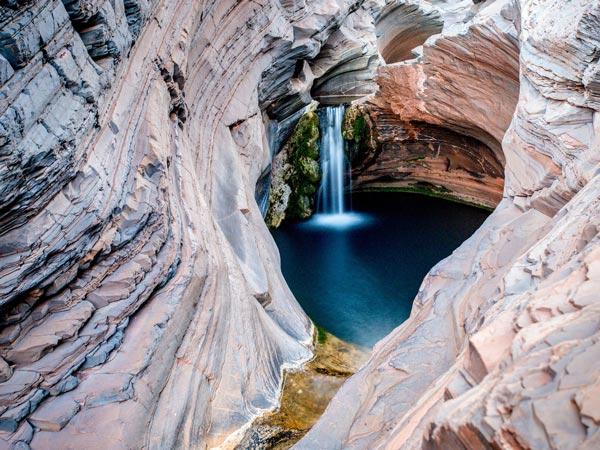
Karijini National Park. Source: Whynotbus 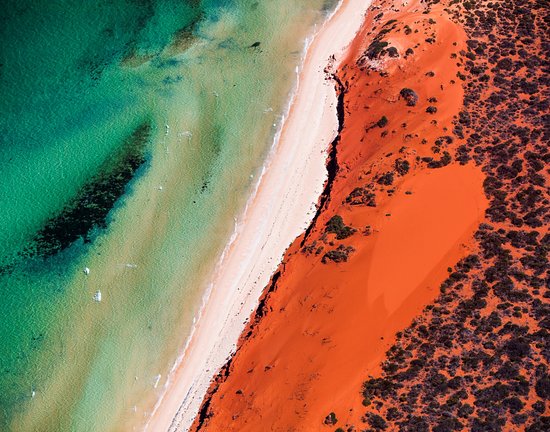
Francois Peron National Park. Source: TripAdvisor
National Park Etiquette
It is important that when visiting our National Parks, we follow instructions and abide by the rules. These are often set out to ensure visitors maintain the preservation of flora and fauna.
- Stay on the trail. Don’t step off a trail unless you absolutely must. Going off trail can damage or kill certain plant or animal species;
- Do not disturb wildlife. Keep your distance from the wildlife you encounter. Some parks require you to stay a certain distance from wildlife, so check Park regulations before your visit. Never try to get closer to an animal, you could cause harm to its habitat or it may become scared and cause harm to you;
- Pets in Parks. For the protection of native wildlife pets and other domestic animals are not permitted in National Parks. Even the most docile dogs are a threat to protected wildlife, their barking and scents can scare local wildlife and attract other predatory animals. Native animals are also vulnerable to diseases that dogs may carry;
- Weed and disease hygiene. More commonly in the southwest, where soil diseases such as dieback are prominent, shoes scrubs are often made available upon entry to limit the spread of weeds and dieback. Shoe cleanliness is something everyone should consider if they enjoy bush walks to limit the spread of weeds and disease;
- Personal hygiene. When camping in remote sites where toilet facilities aren’t readily available, visitors may be required to bring their own chemical toilet and utilise a waste dump. This ensures that our waste is being disposed of appropriately and prevents people from trampling through the bush to do their business;
- Remember to check fire ban regulations. There’s nothing quite like gathering around a fire while camping, but at certain times of the year, fires can be a major hazard in the dry arid conditions of West Australian. Be sure to check the regulations around campfires in the area you are visiting;
- Take nothing but pictures, leave nothing but footprints. This one goes without saying! It is all of our responsibility to take care of our National Parks. When leaving the Park, take with you only what you took in and ensure no rubbish is left behind. Leave rocks, vegetation, and artifacts where you find them and keep the place clean and tidy for others to enjoy.
Aboriginal Ranger Program
Aboriginal people are the traditional custodians of our lands and waters, and their cultural practices have cared for WA’s Outback for over 50,000 years (Create Ranger Parks, 2020). Conservation measures recognise the social, cultural and environmental benefits of Aboriginal ranger programs. Ranger programs provide the opportunity to carry out cultural activities in the country, which is an important part of Aboriginal culture and connection to the land (de Moeller, 2018).
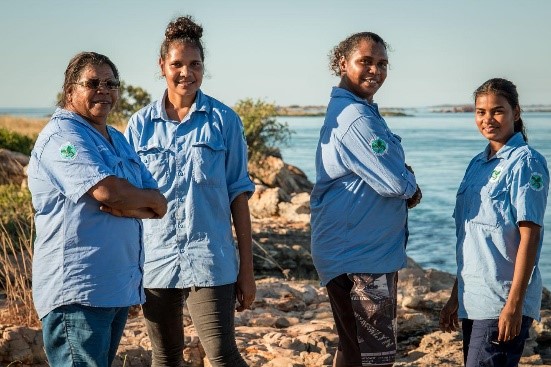
The State Government developed the Aboriginal Ranger Program in 2017-18 to create jobs, training and community development opportunities for Aboriginal people across a range of regional and remote communities in Western Australia (DBCA, 2020b).
The Aboriginal community and Aboriginal organisations lead the program with support from the Parks and Wildlife Service at the Department of Biodiversity, Conservation and Attractions to help Aboriginal organisations manage the country and protect the environment across Western Australia (DBCA, 2020b). Since commencement, the program has continued to train and employ Aboriginal people as rangers to undertake land and sea management activities including:
- biodiversity monitoring and research;
- traditional knowledge transfer;
- fire management;
- cultural site management;
- feral animal and weed management;
- cultural awareness and immersion experiences for visitors;
- guided welcome to country tours and/or talks for visitors; and
- management of visitors or tourists and tourism assets education programs and mentoring.

While exploring WA, take the time to also experience Aboriginal Culture from the areas you are visiting and appreciated the great work the Aboriginal Rangers are doing to protect WA Biodiversity.
Integrate Sustainability has a wealth of knowledge on the conservation and management of biodiversity in Western Australia. If you or your business requires assistance with environmental conservation and management, please call Integrate Sustainability on 08 9468 0338 or email enquiries@integratesustainability.com.au.
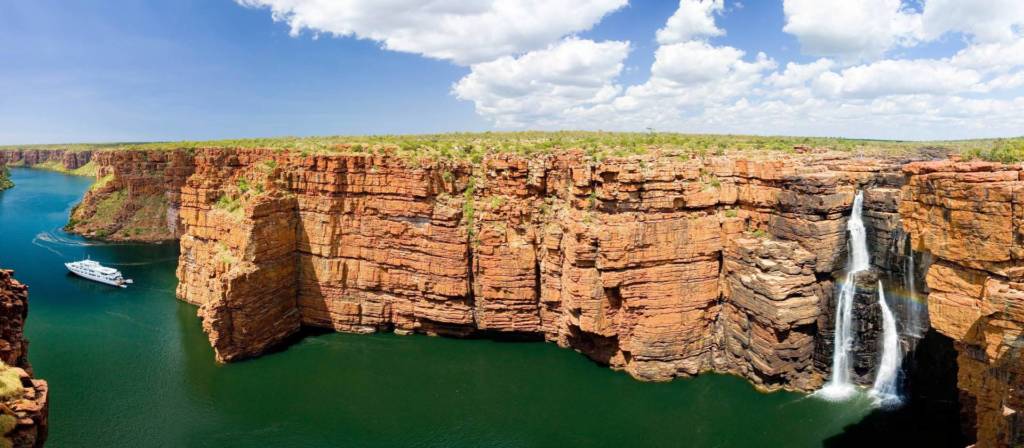
References
Create Ranger Parks. (2020, September 21). Indigenous Rangers: A Proven Success Story. Retrieved from Create Ranger Parks: https://www.createrangerparks.org.au/about
DBCA. (2020a, September 21). Management Plans. Retrieved from Department of Biodiversity, Conservation and Attactions: https://www.dpaw.wa.gov.au/parks/management-plans
DBCA. (2020b, June 15). Aboriginal Ranger Program. Retrieved from Department of Biodiversity, Conservation and Attractions: https://www.dbca.wa.gov.au/parks-and-wildlife-service/aboriginal-ranger-program
de Moeller, O. (2018). We can all help to conserve our parks. Retrieved from The West Australian: https://thewest.com.au/lifestyle/kids/we-can-all-help-to-conserve-our-parks-ng-b88801956z
Environmental Defender’s Office. (2011). Conservation Reserves. Retrieved from Environmental Defender’s Office of Western Australia: https://www.edo.org.au/wp-content/uploads/2020/02/Conservation-Reserves.pdf
InHabitat. (2020). How National Parks Benefit the Environment . Retrieved from https://inhabitat.com/how-national-parks-benefit-the-environment/#:~:text=National%20parks%20contain%20forested%20areas,basins%20intact%20and%20preserving%20wetlands.
NPA. (2020). Why Are National Parks Important? Retrieved from National Parks Association (NPA) of NSW: https://npansw.org.au/what-we-do/why-are-national-parks-important/#:~:text=National%20Parks%20provide%20a%20major,on%20accommodation%2C%20fuel%20and%20food.
Tourism Western Australia . (2020, September 21). Must see & do: Popular National Parks. Retrieved from Western Australia : https://www.westernaustralia.com/en/things_to_do/must_do_and_top_10/pages/top_10_state_national_parks.aspx

